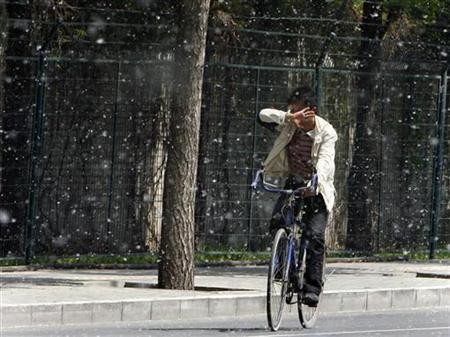Pollen knowingly causes summertime reactions in humans such as runny noses and watery eyes. However, researchers have recently learned that pollen particles become smaller after raindrops blast and break them. This could affect cloud formation and cause rainfall.
The University of Michigan and Texas A&M have published the findings of their study linking pollen and rain in Geophysical Research Letters, according to Daily Mail. Their experiments involved moist pollen pieces placed in a chamber that makes clouds.
Pollen is a thick powder with a hard coat that protects it as it moves. The pollen grains contain a reproductive cell and vegetative cells.
Several sources of pollen exist, including ragweed, sagebrush, and pigweed, according to Clapway. When pollen becomes extremely thick only rain can cause it to vanish from the air.
Rain actually functions as a type of "sponge" that cleans the tiny grains from the air. However, while rain can delete pollen, pollen might actually create rain.
Grains of pollen are smaller than raindrops, so the rain carries the pollen along with it. As a result, when there is rainfall in the autumn or early winter more pollen could exist in the next spring.
Scientists already knew that a mild winter lets trees launch their pollinating process earlier in the season. Meanwhile, dry and windy weather causes the pollen to spread faster than usual.
However, scientists have used technology to understand pollen's influence on Earth's water cycle and the atmosphere's cloud formation.
In the past, atmospheric scientists theorized that pollen particles were unable to influence the weather. Tiny particles in the atmosphere can pull in moisture and eventually cause rain.
Allison Steiner, a professor at the University of Michigan, explains that scientists once thought that pollen grains were "too large" to affect climate systems and form clouds. However, she explains that water vapor breaks pollen particles into "lots" of tinier particles.
Those smaller particles can absorb more water vapor in the atmosphere. They can then promote cloud formation and finally, rain. This mirrors other tiny particles such as dust.
The researchers' next steps will include field studies and computer simulations.



























